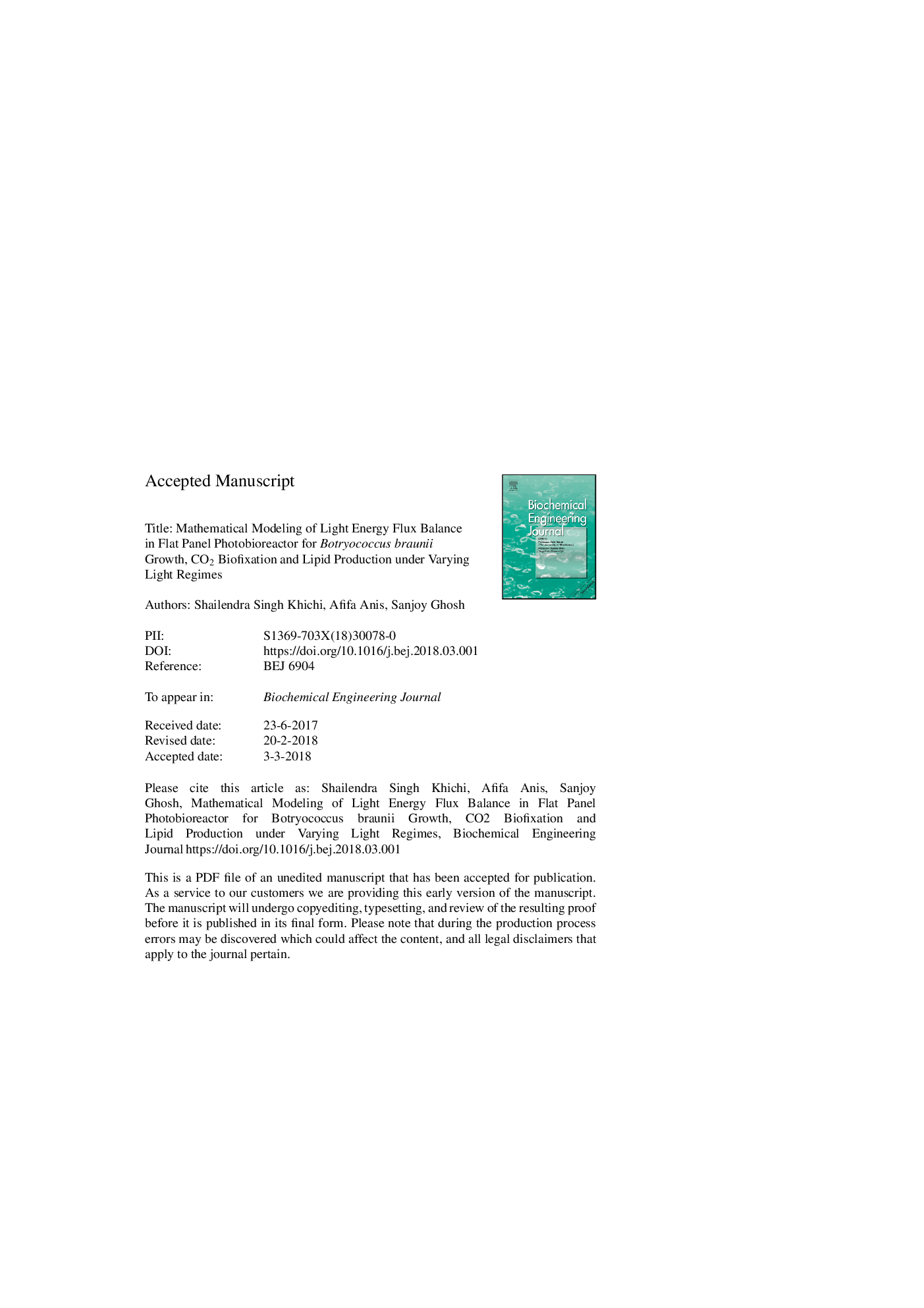| Article ID | Journal | Published Year | Pages | File Type |
|---|---|---|---|---|
| 6482207 | Biochemical Engineering Journal | 2018 | 43 Pages |
Abstract
Light is the most significant parameter for microalgal growth and light distribution inside the flat panel photobioreactor is critical to assess the photosynthetic productivity of Botryococcus braunii. In algal photobioreactors, self shading of the microalgal cells reduces the effective light penetration. The local light intensity inside the photobioreactor is essential for efficient designs. In this study B. braunii was grown in flat panel photobioreactor under varying light intensity. Maximum biomass concentration and maximum specific growth rate were 1.8â¯gâ¯Lâ1 and 1.344 dâ1 respectively at light intensity of 800â¯Î¼molâ¯mâ2â¯sâ1. The maximum lipid content and lipid yield were 27.37% and 0.146â¯gâ¯molâ¯photonsâ1 respectively at 450â¯Î¼molâ¯mâ2â¯sâ1 light intensity. The results reported in this study is used with the radiative transport equation (RTE) to accurately predict and optimize light transport in photobioreactors for biomass and lipid production. Finally, simulation of RTE in flat panel photobioreactor also suggests, at cell concentration (>0.41â¯gâ¯Lâ1) multiple scattering and diffusive reflections reduced the light penetration. Based on these results, optimal conditions for lipid production were found to be at mid level light intensity i.e. 450â¯Î¼molâ¯mâ2â¯sâ1 which allows maximizing the use of light energy by the cells to produce maximum lipid.
Keywords
Related Topics
Physical Sciences and Engineering
Chemical Engineering
Bioengineering
Authors
Shailendra Singh Khichi, Afifa Anis, Sanjoy Ghosh,
